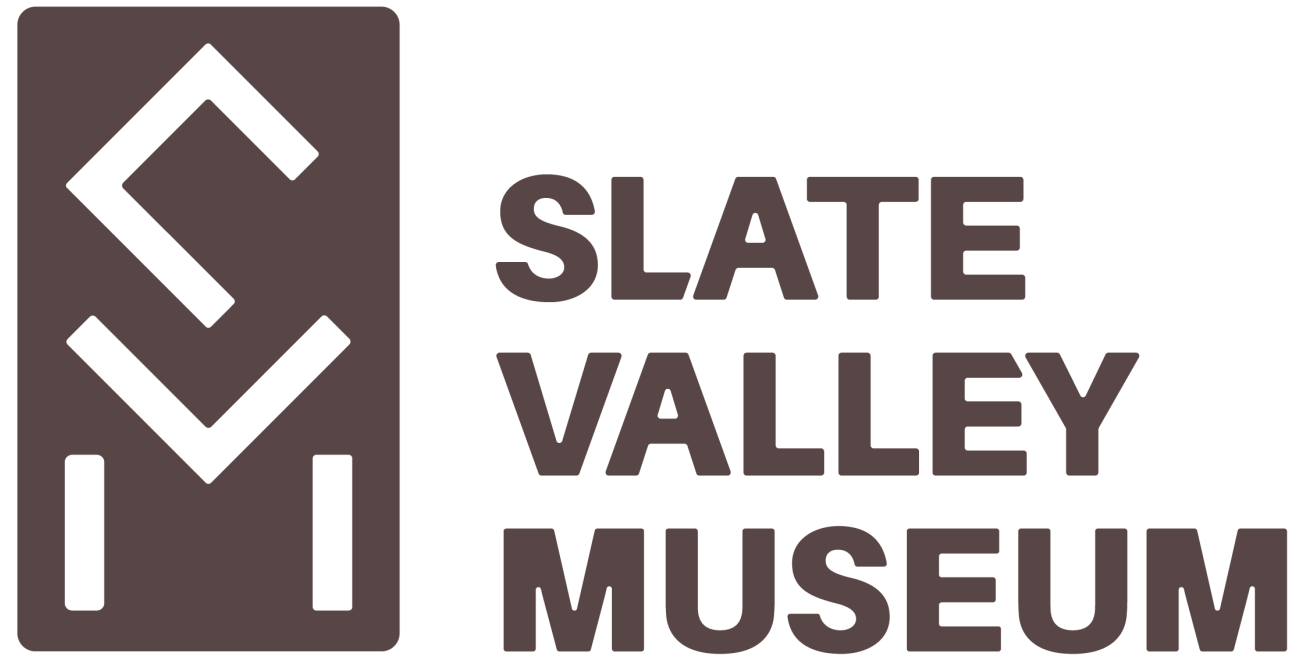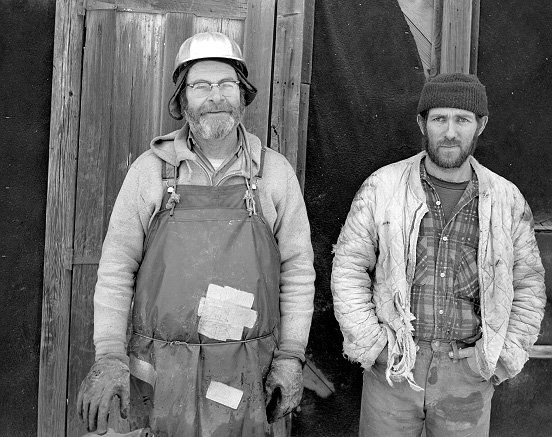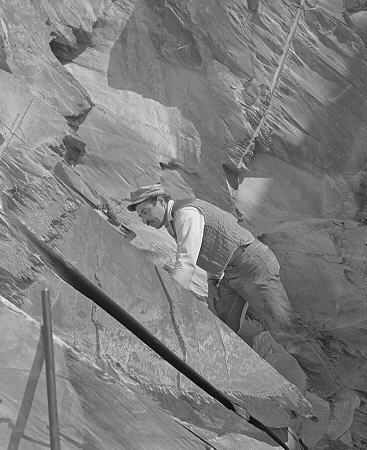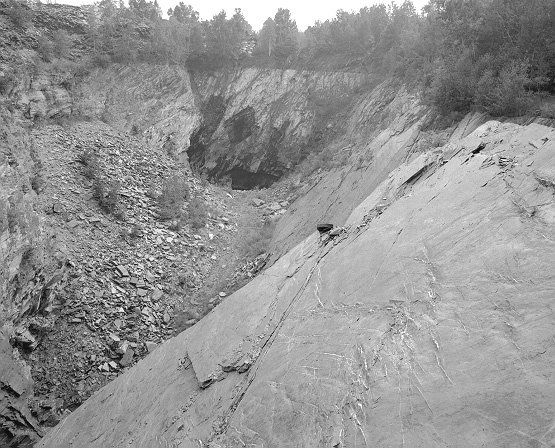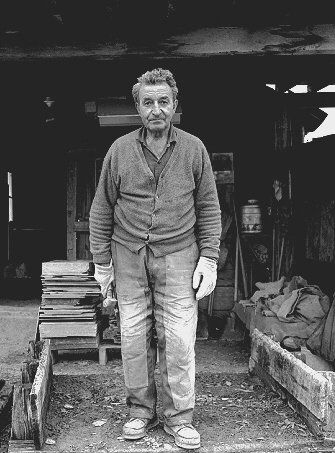EXPERIENCE
The Rich Slate History
NEIL RAPPAPORT
Well-known photographer Neil Rappaport (1942-1998), a long time resident of West Pawlet, VT, and photography professor at Bennington College, Bennington, Vt., was determined to document the lives of local people, including quarry workers. He once described his portraits as “biographies rather than essays.” When the Slate Valley Museum first opened in 1995, he provided the following artist’s statement for the exhibition of this collection:
“I began photographing the slate industry, its methods, and its working people during the late sixties and early seventies by accident. On a Saturday afternoon, my car broke down next to the Evans pit, from which the sounds of Italian opera could be clearly heard. Looking over the edge, I could see a lone rock man shoveling rubbish, the radio in his lunch bucket playing the Saturday afternoon opera from the Metropolitan. I knew I should photograph there.”
THE MURAL
This Works Progress Administration's Federal Art Project mural was painted by Martha Levy in 1939 for the Granville (NY) High School. The mural hung in the study hall of the school and exemplified one of the ideals of the WPA/FAP by depicting local history. It served to educate students about their heritage, clearly showing men engaged in the entire process of slate production. As an integral part of the school's architecture and seen by students every day, the mural was also intended to teach the significance of art in our society.
When the Granville High School was under construction in 1959, the mural was taken down. During the Bicentennial (1976) it was restored by Dean Fausett of Dorset, Vermont and rehung in the Granville Town Hall. It was moved to its new home in the Slate Valley Museum in 1995 when the museum opened, and is a centerpiece in the museum collection. Research about Martha Levy and the mural will be ongoing projects at the museum.
The first two panels, from left to right, are thought to have been painted from photographs taken at Hugh G. Williams' "Big Boy" quarry in Pawlet, Vermont (about 1/4 mile east of the NY/VT line off what is now Route 149). The third panel may be of a different quarry. Some names of the men in the painting are known, but the figures have not been definitely identified - Paul Kasuba, Robert "Cymro mawr" (the big Welshman) Williams, Robert "Cymro bach" (the small Welshman) Williams, Dave "Duck" Roberts. The boss of the yard in the suit and hat carrying a piece of slate on his shoulder, the last figure to the right in the mural, is thought to be Walt Dickinson.
Men Working in Slate Quarry, oil on canvas, Martha Levy, 1939, Works Progress Administration/Federal Art Project, Slate Valley Museum Collection, All Rights Reserved.
THE DREAM & REALITY
Immigration and Assimilation in the Slate Valley of New York and Vermont, 1840 to Present.
CLICK FOR MORE INFORMATION
Examine why immigrants left their homeland; why there was so much disparity in income among new immigrants; what beliefs encouraged assimilation or cohesion; what role religion played in the relationships between immigrant groups; why some descendants stayed in the boom and bust slate industry while others moved away; and, finally, why for some the difference between the dream and the reality was acceptable.
